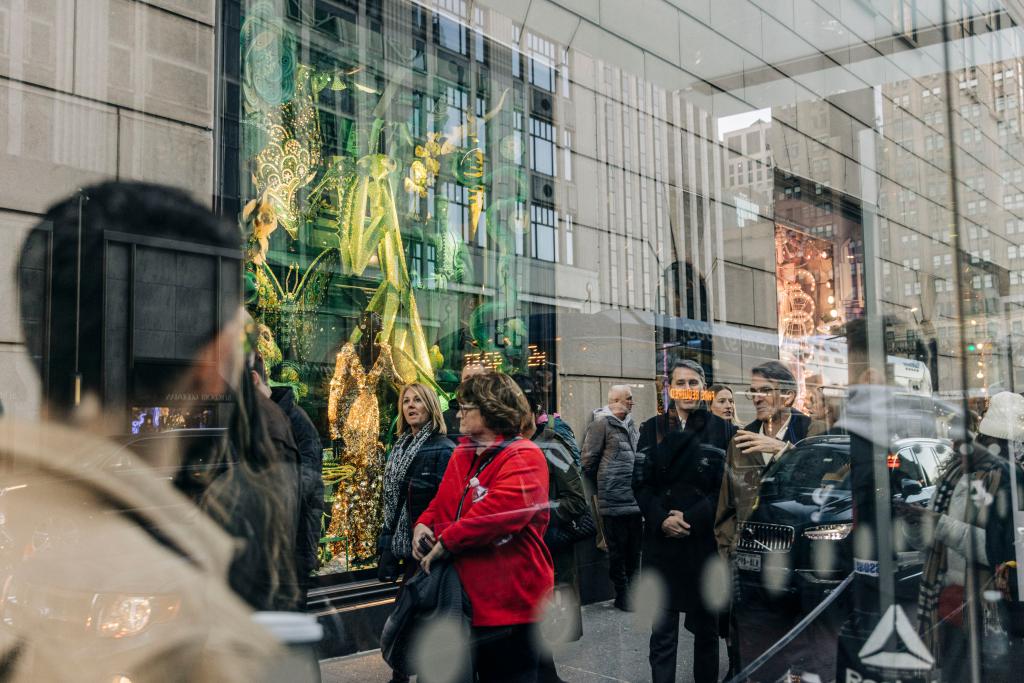NYC’s retail renaissance in full swing for the holidays: Let luxury and high-priced indulgence flow
It’s the holiday season. Ho, ho, ho — let luxury, excess, and high-priced indulgence flow.
Spare me the “Tale of Two Cities.” If your heart and mind are invested this time of year in the “disenfranchised,” the homeless, the criminal underclass, and in the privations of NYCHA-dwellers, move on to the 1,001 commentaries that scold middle- and upper-class citizens for their supposed greed.
Conspicuous consumption is a wondrous thing for those of us who pay 99% of city taxes, enjoy peaceful family lives, and abide by the law. We’re entitled to cheer for the Big Apple’s commercial renewal.
Our retail environment might be a better, tangible gauge of the city’s social and economic health than dry statistics about crime, inflation, and housing shortages. Its renewal is reflected in this brightly lit season of holiday shopping, despite frequent rain, gridlock, and subway disruptions.
Brick-and-mortar retail is back after years of business lost to shop-from-home, as any visit to Bloomingdale’s, Macy’s or TJ Maxx will attest.
The shimmering, LED-powered snowflake above Fifth Avenue at 57th Street can stand for the Renaissance. Indeed, among the best, most visible Big Apple news since March 2020 is the boom in new store openings — not of pot shops or Dunkin Donuts (although there are plenty of them), but of new places for middle-income and more affluent shoppers to ogle and purchase fashionable clothes, jewelry, household furnishings, and food.
Confounding forecasts by economists and COVID-nostalgic urban doomsayers, the Big Apple’s brick-and-mortar retail scene is — for all the undeniable impact of shop-from-home — thriving anew. Retail brokers say the market is “on fire,” and for once their optimism is grounded in reality.
This isn’t happening only on Fifth and Madison Avenues, 34th Street, and other historically busy shopping corridors. Nor is it entirely about luxury, such as in the “High Jewelry” department at Van Cleef & Arpels’ just-opened boutique on Madison Avenue.
However, I admit the sense of abundance lifts my spirits even if I can’t afford it. I have no immediate need for, nor the means to purchase, an Aston Martin like the ones on view at Park Avenue and East 57th Street. But I love that I can look them up when I‘m in the mood.
Nothing better displays the city’s unparalleled capacity to regenerate in the wake of tragedy than the lights shining brightly in parts of town that long needed better stores. The trend isn’t “trickle-down,” but trickle-sideways as an investment in adjoining districts spurred improvements in neighboring ones.
Take Broadway south of City Hall. Three years ago, reeling from pandemic lockdowns and the lingering economic impact from 9/11, it was lined mainly with bank branches, pizza joints, and vacant storefronts.
Some of them remain. But today there are also Zara, Anthropologie, Urban Outfitters, and Chinese chain toy store Miniso. French department store Printemps will soon open its first US location at One Wall Street. Brooks Brothers plans to launch its New York flagship at 195 Broadway at Fulton Street.
Not many years ago, Houston Street from end to end was largely a creepy corridor of tenements, junk stores, and vacant lots. The experience was transformed by the likes of Whole Foods, vintage and secondhand store No Standing NYC, and the Russ & Daughters Café.
Start your day with all you need to know
Morning Report delivers the latest news, videos, photos and more.
Thanks for signing up!
On the western end of Atlantic Avenue, the blocks that pass through Brooklyn Heights, Cobble Hill, and Boerum Hill teem with contemporary boutiques and food shops, with names such as East Fork, Misha & Puff, and Paige Sargasson.
The corridor was once known for small antique shops and Arab groceries. Their dwindling numbers reflect not so much a loss of local character as evolution. The area, like many others, drew new residents who rented or bought apartments in new buildings and demanded better shopping and services.
There’s a similar phenomenon in Harlem, although new shopping options involve more national chains. Local residents long suffered from poor retail investment. In the past few years, West 125th Street attracted popular names such as Whole Foods, Marshals, Victoria’s Secret, Banana Republic, and, most recently, Target and Trader Joe’s.
Firebrands who rage over “gentrification” are vastly outnumbered by local residents who happily throng the stores.
New York City has more problems than most of us can count. But we can scratch the plague of under-utilized and empty storefronts mostly off the list. It’s something to celebrate even when we’re fighting the crowds which are, after all, the best news of all.










